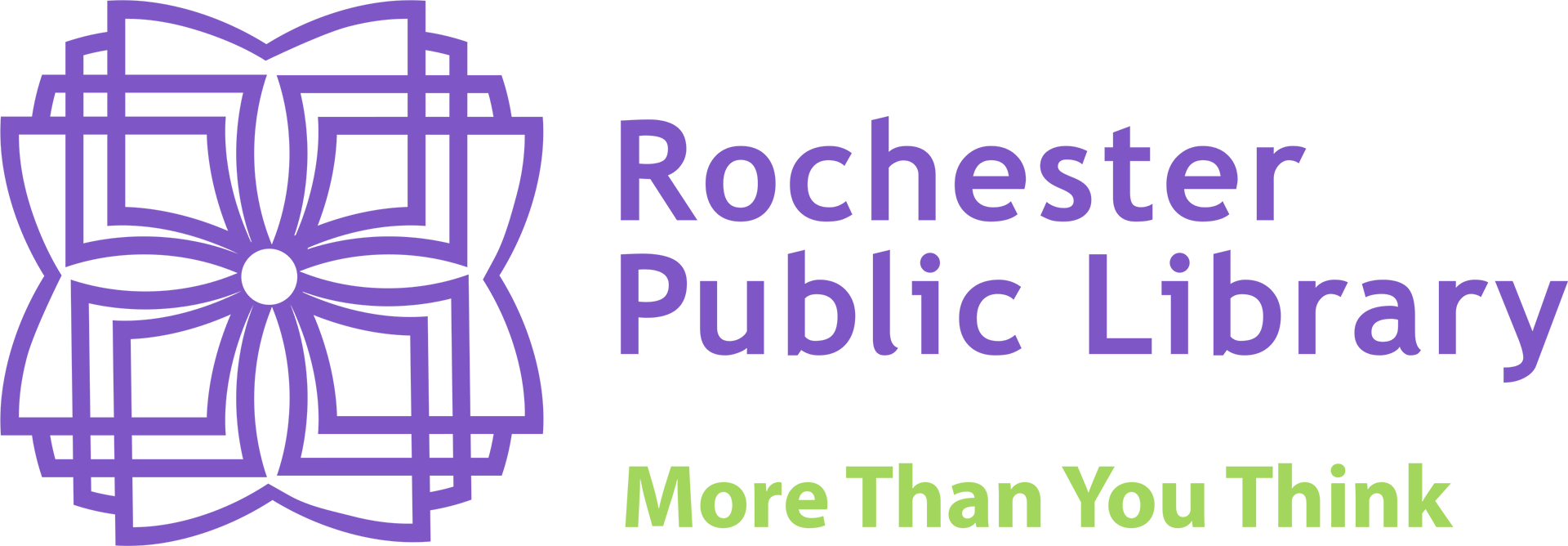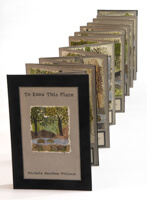
Michele Heather Pollock, To Know This Place
This artist book was inspired by a walk I used to take daily in a woods near my home. I would walk the creek, observing the tiny changes that are apparent when you learn a place well. In 2018, I developed a chronic illness, Scleroderma, which made woods-walking more and more difficult. Created to celebrate and remember my relationship with this one particular place, it is also a celebration of nature – part field guide, part nature journal, part scrapbook, part repository of memory.
Each page is a small original quilt, made of gel plate printed papers and fabric, machine quilted. Plants, animals and mushrooms I would find along the walk were drawn with the sewing machine, painted with acrylics, and hand embroidered. “Specimen tags” were typed on an old Royal typewriter I found at an antique mall. The last page features an original poem. The book is housed in a custom clamshell box. The book took more than two years to create and incorporates all my artistic identities – fiber artist, poet, hand bookbinder, amateur naturalist.
The book contains 39 pages (each 12.5” x 8.5”) and is bound in a modified accordion binding. It can be displayed like a traditional book, with a single page spread showing. Or it can be displayed standing with several or all pages showing – more or less of the book will be visible, depending on the space available.
This book is shown off best in this video: https://youtu.be/BBzsiE3G7P0
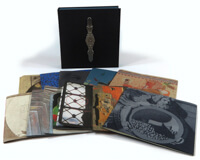
Elsi Vassdal Ellis, Traumarbeit
When I was 12, Howard Carter saved me from bullies when I discovered him in the library. My dreams of becoming an archaeologist began. I read eclectically. Would it be Egypt or Pre-Columbian Americas or maybe China? At 17 I discovered academic gender bias and decided to make artifacts for future archaeologists to spite the sexist attitude of the college recruiter. The narrative of this book is divided into 9 pamphlets to read in any order with imagery reflecting my early archaeology dreams merged with memories of a dream inspired and influenced in part by a second reading of Herbert’s Dune and Pavić’s Dictionary of the Khazars. Cultural images included here are not appropriations per se but a celebration of cultures and the curiosity that was part of my youthful ambitions to be a renowned archaeologist. The digital collages combine stock, public domain, personal, vintage/antique photographs, copyright free clip art, scans of fabrics, letterpress experiments. The tenth pamphlet is the introduction/colophon, and identifies sources used for the curious. The single and double sewn pamphlets combine various accordion folding approaches with hand cut and Sizzix cut die-cuts. The papers vary with each pamphlet, making use of remaining papers collected over 40 years of teaching offset printing. The edition is inkjet printed using a Canon G5020. Each clamshell box in the edition has a unique escutcheon plate found at ReStore.
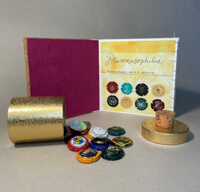
Marcia Vogler, Placomusophilia
‘Placomusophilia’ represents a brief history of the champagne cap, and my personal experience and enjoyment of collecting them. The accordion book relies on painting and collage to produce the images, and handwriting to tell the story. It includes some very special memories of drinking champagne.
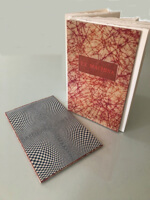
Kristine Bouyoucos, Ex Machina
For the past many years, I have been combining my love of music with my love of printmaking, interpreting and joining musical scores by famous and not so famous composers, with my own imagery as I feel appropriate. I have used the musical score from Bach to Crumb, wanting to honor each composer.
Recently, I went to a concert to hear the world premiere of a piece of music by Eastman School of Music professor, Carlos Gutierrez Sanchez. It was a wild piece, very contemporary, which can be a bit scary for concert goers, but the orchestration and intricate rhythms, appearing and disappearing themes were so readily fun and accessible, that you just had to give yourself over to the “madness” of it all.
After the concert, I hesitatingly approached the composer, and to my joy, he gave his permission for me to use his music as I chose! The next day the entire score arrived in my in-box. In order to match the composer’s extreme imagination, I have done my best to follow his lead, using all manner of print techniques, from the traditional to the most unlikely and fun digital treatments, real threads and sewed papers.
The book is an accordion fold, with the title hot stamped on leather.
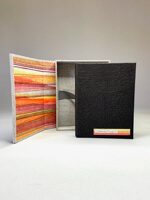
Bettina Pauly, California Poppies
California Poppies describes the artist’s walk through the Tenderloin, a neighborhood in San Francisco mostly known for its homeless population.
The design on the pages suggests the sidewalk, with pieces cut out symbolizing the cracks and potholes on City streets as well as in our society.
The cover of the book is bound in handmade Cave paper with its prominent texture that feels like pavement. Beauty can be found despite homelessness, dirt, stench and poverty.
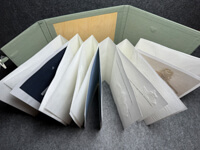
Katherine Kenal, Released
It was late spring, and the sky was full of seeded balls of fluff just released from the surrounding cottonwood trees. The white fluff had a delicate sense of freedom. Its movement through the air prompted the writing of a poem included in this artists’ book. Through the process of writing, the descriptive verse seemed to fluidly transition from botanical to human.
Released contains five folios of Japanese kozo sewn into a concertina spine made of Japanese shiramine, wrapped in a chemise. It is housed in a hard-cover Japanese portfolio with a birdseye maple wood inlay. The artist digitally printed the original poetry. The photographs, also by the artist, are digitally printed with one photograph hand-colored.
Collaged fibers are pulled from sheets of Asarukusui paper.

Carol Acquilano, Watery Venice
“Venezia” woodcut was carved after one of my many trips to Venice. The magical watery environment always makes a big impression. I have never experienced the rising tide, and always imagined it to be something of a visual spectacle.
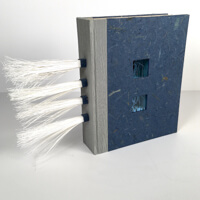
Chris Perry, 232 Ripples: Still
Because of a pandemic sources for materials recycled books were closed forced to use only what was in the studio a small pile of books no one wanted each piece used one not twenty or ten one most were dictionaries did you know they become out of date language changes the words stay the same but the meanings change fall into disuse are left behind perfect for cutting into hollowing out filling in with another shape rebound with a flourish a still steaming distilling purifying but not words.
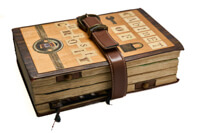
John Ballou, Cabinet of Curiosities
The Cabinet of Curiosities is an altered book made to be a treasure hunt. A hide-and-seek game. Can you find all six rubber stamps hidden within the book?
To fully understand the Cabinet of Curiosities first you must understand letterboxing. Letterboxing is a hobby that began in the moors of England and spread to North America in the late 1990’s. Letterboxers hide a rubber stamp and a journal in a waterproof box and hide it in the world. Usually the rubber stamp is hand-carved, or made custom, to represent the place or theme of the hunt. A set of clues on how to find the box are written, then given to those who wish to find the letterbox or published online. When a seeker finds the box, they can make an image of the rubber stamp in their personal journal, to keep that image as a memory of that letterboxing hunt.
Sometimes letterboxers get together to have a “gathering” to share stories of their hunts. At such gatherings, it is customary to share a personal rubber stamp image, called signature stamps. Sometimes a letterboxer also has a box called a “personal traveler”, a special rubber stamp that travels with the boxer around to different gatherings. That personal traveler letterbox often requires a riddle to be solved, or some bit of trivia answered.
The Cabinet of Curiosities was created to be a personal traveler letterbox. A riddle of a book. Given to a letterboxer at a gathering to see if they could find all six hand-carved rubber stamps hidden in the book. A treasure hunt without leaving one’s chair.
The theme of the book is based on traditional Cabinets of Curiosity. These rooms were popular from around 1600 to the mid 1800’s and predate the modern museum. Wealthy creators would acquire artifacts and oddities from around the world to furnish their collections in a room of their home. The collection rooms served as a socioeconomic status rank. Collections might include objects from geology, archaeology, religion, history, art, etc.
The artist chose to divide the book into six themes: anatomy, botany, geology, occult, zoology, and archeology. Each section includes a mixed media collage. The collages were sourced from dictionaries, field guides, and ephemera. They include folders, envelopes, and pullouts to explore the themed topic. The collages camouflage the hidden compartments and drawers that contain the rubber stamp treasures.
In addition, a journal was inserted into a carved-out panel in the book’s side. This journal was used for letterboxing finders of the book to record their achievement in finding all six stamps by stamping their own signature stamp in the pages. This logbook catalogs letterboxer’s finds from 2008 until 2019.
The original book is now buried under glue and paint, lost from the artist’s memory. However, if it wasn’t for this transformation into a tome of curiosity, it surely would have perished a decade ago.

Carole Kunstadt, Migration
My works reference the material of antique papers and books, deconstructing paper and text, and using it in metaphorical ways.
In geography books from the 1800’s the observations of the world provides a record of our long held fascination and curiosity for the lands beyond. That drive to search for understanding continues to capture our imaginations and propel our explorations further.
Migration – maps from geography books published in 1868 and 1875 are cut and recombined. Combining the maps with antique wooden shoe forms, map pins and thread, suggests a journey charted, imagined, or remembered. A unique perspective of mapping the world is depicted utilizing the antique materials in sharp contrast to our present day issues and conflicts, affecting untold populations around the world.
The carefully charted topographies, geographies, boundaries and coordinates are ultimately transformed, inviting new explorations. Layering the paper, responding to the antique cartographic renderings and the contours of the shoe forms, playfully suggests new narratives.
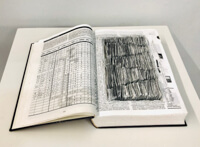
Dorsey Hogg, Words Can Tear Us Apart
I love working with old dictionaries because the pages are beautifully uniform and they contain our entire language. What power those tiny printed words can hold depending on how you use them.
In “Words Can Tear Us Apart” I explore the aesthetic of stacks of torn paper layered in rows together and then the dimensionality of these same stacks pulled out in arms escaping the book. All the pages were removed and resized by tearing, I did not use a knife or scissors to cut the pages. I enjoyed seeing the pile of torn pieces stack up and the torn edges of the empty space in the dictionary become deeper and deeper. It was cathartic to only use my hands as tools and feel the paper between my fingers. We underestimate the power of books and all the words they contain.

Sally Chapman, Belly Dancers Kaleidoscope
I often go to our local Greek restaurant to watch the belly dancers perform every Saturday night. Their extraordinary skill and graceful movements are mesmerizing as their scarves twirl along with the jangling of the coins decorating the costumes. To capture this experience, I used a kaleidoscope format that can be turned to reveal four different dancers and their flowing veils. It’s but a glimpse of each, just as our memories hold on to mere fragments of our experience.
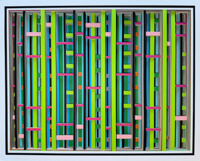
Bret Garwood, A Little Orange, No. 2
My geometric, abstract designs are created by imagining a strict series of rules and patterns. The designs are realized through layers of hand-cut cardstock paper cutouts.
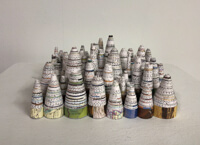
Dorsey Hogg, Points of Interest
I have been working with discarded books for about 10 years and I am overwhelmed with the amount of material I have at my disposal. I like to collect discarded dictionaries and encyclopedias because they contain endless uniform pages that are just waiting for a new life.
In “Points of Interest” I push the structure of paper beads into 3 dimensional forms and create a landscape of little monuments to encyclopedic knowledge. As the many rolls of paper extend out from the middle, lines of color and text create striations that remind me of geography and architecture at the same time. The shapes are too uniform to be truly organic, but at the same time they have too much of a life of their own to be man-made. I want the viewer to forget that these were once pages arranged flat, bound in one of many volumes on a shelf (or in cardboard boxes in someone’s basement), and now they create peaks and valleys, convex and concave spaces that tell stories of their own.
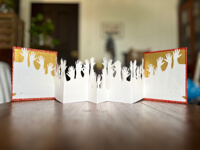
Rachel Smith, Waiting to be Heard
My adoptive home and I have a complex relationship, perception and reality colliding while I try to find a space for myself in this place, I am often told I do not belong. The upheavals of recent years have just brought to the surface tensions that used to lie below. I’m less forgiving, less tolerant and less accepting. The mood of the city suits my current state and as I face new choices and start down a path that I once turned from, I look forward to raising my voice to be heard again.
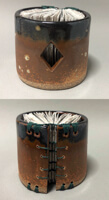
Rachel Stickney, Vessel Book #1
This small but mighty book is an experiment in material and book form. I wanted to play with the idea of books made from the earth, meaning clay and paper. The idea of a book that can’t necessarily be read also intrigues me. This little book in its round, endless form, plays with these ideas. It also takes a great deal of planning and having the vision fully formed before the book is even brought into being. Holes have to be measured and pre-punched when the clay is still wet in order for a successful binding after the covers are fired. With this book starting off the series, I have made a small collection of books in this style with paper and clay melding together.
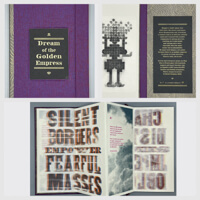
Rachel Simmons, Dream of the Golden Empress
Dream of the Golden Empress, 2023. Limited variable edition artist’s book, edition of 10. Double-sided accordion in a hard cover magnetic enclosure with letterpress and screen prints on French and Thai kozo papers, book cloth, and decorative Japanese paper. Video can also be found on YouTube. Through cinematic visual language, Dream of the Golden Empress tells the story of an arrogant emperor bent on environmental destruction.
The characters in this allegory— the Emperor, the Golden Empress and the People— are archetypes referencing actors from the current political landscape in the United States. Like shadow puppets, each character embodies easily recognizable traits like greed, selfishness, compassion, anger and love. The lush color palette of violet, black, gold, emerald green and bright orange alludes to elitist behaviors of excess and unchecked power. Across the book, a linear narrative in fuchsia floats over repeated storm clouds, disrupted by a sequence of five-line protest poems, each multilayered through pressure printing on wood type.
The textural quality of these prints evokes a sense of vibration or disruption, hampering one’s ability to read the message as it glitches. These two distinct but interwoven threads, the narrative and the poetry, capture two ideas: the historical retelling of a political disaster, and the interruptions caused by cacophonous voices of dissent, warning and protest.
The moral of the allegory is revealed in the colophon where readers are asked to take responsibility for their political choices, because despite what fairytales tell us, there are no heroic figures who can save us from ourselves. On the reverse side of the accordion, the Golden Empress is illustrated through Lego relief prints in a style inspired by Balinese shadow puppets. She moves through a series of poses—perhaps dancing or fighting—as befitting her dream to inspire the People to move, respond and take action.
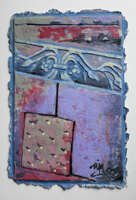
Nancy Jo Gambacurta, Salterini Couch
This work is a hand-made cast paper relief sculpture measuring 22″ in height by 16″ in width and is framed in a metal shadowbox frame. I have named it “Salterini Couch.” The piece was sculpted in modeling clay and a plaster mold of it was produced. Prior to casting, any clay residue was removed. Sizing was added to the paper slurry to prevent a “blotter” effect during the painting process. Talc was applied to the mold as a release agent. The slurry was then pressed into the mold and after an initial drying period, the completed sculpture was removed from the mold. I then allowed the cast paper to dry over several weeks before applying the acrylic paint to my design. This is one of several pieces that I completed where I combined relief sculpture with painting. This is a unique process and examples of it are few and far between. In fact, my entry to The Art of the Book and Paper last year appeared to be the only cast paper piece in the show.
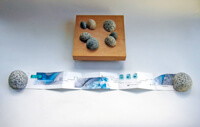
Jim Cokas, The Conversation
A book, as defined by the American Heritage Dictionary, is: “A bound volume made up of written or printed pages fastened along one side and encased between protective covers”. But what if a “cover” were a stone you held in your hands and split open — the pages spilling out in a stream of words and images? Can the form of the book actually become part of its meaning? Can a book, not just the story it holds but the physical object itself, be a metaphor for the subject it “contains”?
This particular piece — The Conversation — is conceptually grounded in a poem I wrote about a conversation between the boulders in a river, and the river itself. Each presents a unique perspective that comments on the role of natural forces and systems (water, erosion, time). Through the use of language, interpretive typography and imagery, a link is forged between these forces and the reader/viewer.
For almost as long as I’ve been creating visual works I’ve also been writing. In this piece I have attempted to combine the two. In doing so I found myself intrigued by the intermingling of text and imagery; the way one can inform the intent or meaning of the other. This creates new contexts and perspectives that can affect our comprehension and our conversation.
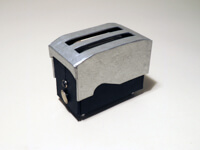
Heather Doyle-Maier, Toaster
Toaster was inspired by an aging appliance with an erratic tendency to scorch whatever food was popped into it and the discussions of fault that then ensued in our kitchen. With room for only a single phrase on each page (piece of bread) in the accordion, the pivotal moment can be slowed down and considered before further heated words are exchanged. This book is one of the Domestic Discussions series, in which marital conversations intersect with household appliances.
The pages of Toaster are made from bond paper and were hand-printed with rubber stamps and sewn together with embroidery thread. The toaster shell is constructed from x-board with vintage buttons repurposed as the toaster controls. The lid is also constructed from x-board and covered with silver lokta paper. Tyvek is used as a connective layer in the accordion; book cloth is used as a connective layers in the shell.
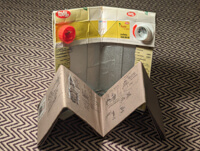
Ben Rubin, Experimental Travel Books
In my artistic practice, I have discovered a profound intersection where journals, observational studies, found objects, to-do lists, color palettes, dreams, post-it notes, photos, and stray doodles converge within the pages of a sketchbook. As I trace experiences, a sketchbook serves as a pocket-sized play-pen and an all-purpose junk drawer. It creates an open orientation to the world, a gateway facing new perspectives within and without. This integration process has become invaluable within daily life. Over time, the collected tiny moments form a space I can return to for understanding and sharing inspiration.
While reflecting on the artist statement for my submission to the Art of the Book last year, I was struck by this idea of a sketchbook as an intersection, one where the design can shape the artistic journey it follows. I looked through my library of experimental books and found several that seemed to embody the intersectional process, each exploring cross referencing and interleaved pages in different ways. I chose two (which I have submitted) and combined their designs to inform a new iteration. This sketchbook (submission #3) was created before a trip to Havana, Cuba. The unique format and use of index cards allowed me to organically develop themes and create points connecting the trip to other adventures before and after. I often feel that when I visit people and places, I pick up in the present just where I left off. All time from the interlude folds into itself. With perpendicular folios, a symbiotic relationship between narratives is defined through overlaps and contrasts.
All of these sketchbooks are worn, tucked into my back pocket alongside my wallet and along for the ride everywhere I went. I have created over 100 travel sketchbooks, each a unique experiment in hand-binding and imprinted with the places I’ve ventured, near and far. They serve as personal explorations of art and travel, spanning 40 countries and more than three decades and documenting various chapters of life. My passion for sharing this art form has led me to teach bookbinding and artist bookmaking workshops in Mexico, Vietnam, Slovenia, South Africa, Afghanistan, Cambodia, and the United States. Currently, I have the privilege of teaching K-12 art at the Rochester International Academy, a public city school specifically designed to support and empower refugee students and new arrivals to the United States. As a 21st century artist celebrating a global tradition that extends back thousands of years, I aim to inspire others to follow and shape their daily narratives, bridge cultural and linguistic divides, and discover the transformative power of book arts.
Back to Art of the Book
